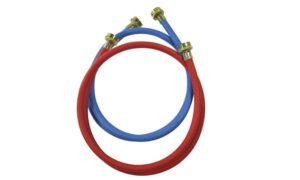Last updated on June 25th, 2023 at 04:42 am
The way we do laundry has been revolutionized by washing machines, which provide efficiency and ease. The selection of detergents and fabric softeners is essential to getting the best results and maintaining the cleanliness and freshness of our clothing. In this post, we’ll examine the value of utilizing the right products and examine how they affect fabric care and washing.
How Detergents Work in Washing Machines
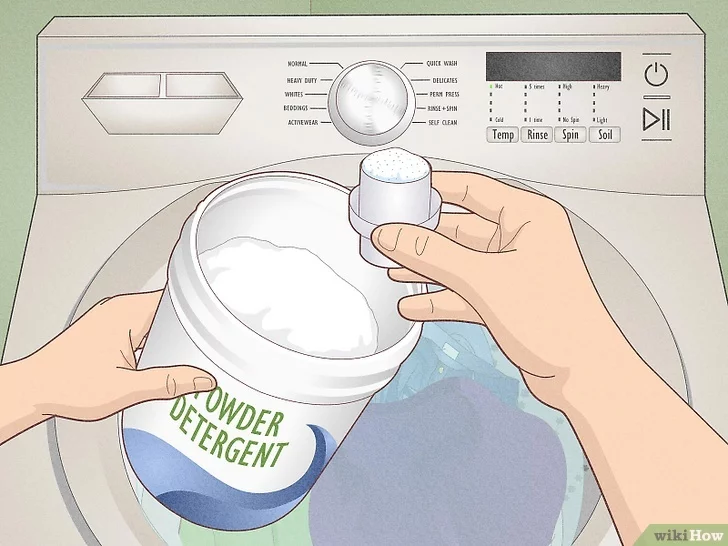
Photo Source: wikihow
By eliminating stains, grit, and smells from our clothing, detergents are essential to the cleaning process. They have a mixture of enzymes, surfactants, and other chemicals that combine to dissolve and suspend dirt particles. While enzymes specifically target certain types of stains, such as protein-based stains like blood or grass, surfactants aid to loosen dirt and stains off the cloth.
There are many different kinds of detergents on the market, including powder, liquid, and pod varieties. Each kind has benefits and is appropriate for various washing machine models. Traditional powder detergents are often advised for top-loading machines, whereas high-efficiency liquid detergents work well for front-loading machines.
The Impact of Fabric Softeners on Laundry
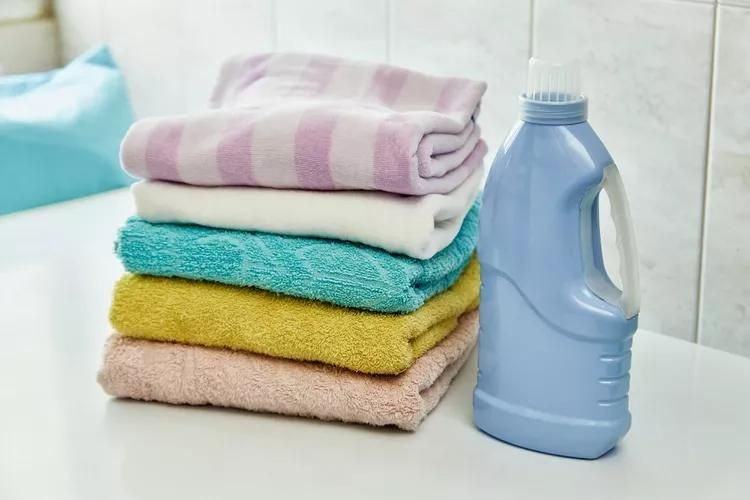
Photo Source: realsimple
The purpose of fabric softeners is to improve the feel, look, and smell of our clothing. They function by applying a thin layer of chemicals to the fibers of the fabric to minimize friction and static, making the clothing feel softer and smoother. Additionally, fabric softeners aid to minimize wrinkles and facilitate ironing.
Dryer sheets and liquid fabric softeners are the two primary categories of fabric softeners. Dryer sheets are put in the dryer with the clothing, and liquid fabric softeners are applied during the rinse cycle. Although their techniques of application are different, both types provide comparable advantages.
There are various benefits to using fabric softeners in washing machines. They aid in lint reduction and lessen the likelihood of clothing sticking together. Additionally, fabric softeners give the laundry a fragrant boost that makes it smell clean and fresh.
Proper Usage and Dosage of Detergents and Fabric Softeners
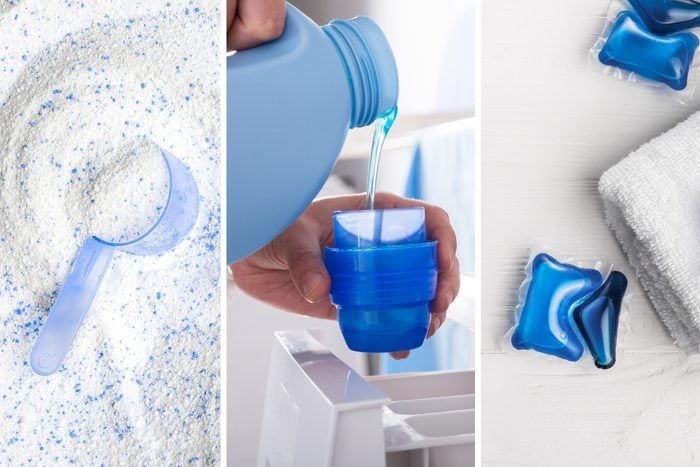
Photo Source: rd
To get the best cleaning results and keep the quality of our clothes, using detergents and fabric softeners correctly is crucial. Let’s look at some recommendations on how to use them and how much to take:
Follow the Manufacturer’s Instructions
Each detergent and fabric softener product comes with specific instructions provided by the manufacturer. You must carefully read and adhere to these directions. They often provide dose, load, and water temperature guidelines.
Measure the Right Amount
Using the correct amount of detergent is crucial for effective cleaning. While too little soap might not have the necessary cleaning power, too much detergent might leave excessive froth and residue on garments. Measure the correct quantity based on the size of your load by following the instructions on the product’s container. Increase the dose a little bit for heavily dirty or bigger loads.
Consider Water Hardness
Water hardness can affect the performance of detergents. To make up for the decreased efficacy caused by hard water’s high mineral content, you might need to use additional detergent. On the other hand, if your water is mild, using less detergent than advised can be sufficient.
Pre-Treat Stains
For tough stains, it’s beneficial to pre-treat them before washing. There are several stain-removal solutions on the market, such stain sticks or sprays, that can aid in dissolving and getting rid of tough spots. Before washing, let the stain remover to permeate the cloth as directed on the label.
Separate Different Fabrics
It’s important to separate clothes based on fabric type and color. Similar textiles should be washed together to minimise colour bleed and to guarantee thorough cleaning. Gentle cycles and additional care may be needed for delicate textiles like silk or wool. To choose the proper washing settings, refer to the care labels on the clothing.
Use Fabric Softeners Sparingly
Fabric softeners should be used in moderation. Overusing them can cause a residue to build up on clothing, which reduces absorbency and makes it feel oily. Follow the manufacturer’s advice on dosage. Alternately, you can decide to completely exclude fabric softeners and still have clean, fresh laundry.
Clean the Dispenser and Drum
Regularly clean the detergent and fabric softener dispensers, as well as the drum of your washing machine. These locations may accumulate residue over time, which may have an impact on how well your laundry products work. To remove any accumulation, wipe the dispensers off with a moist towel and run an empty cycle with hot water and vinegar.
You can make sure you’re using detergents and fabric softeners appropriately, maximising their efficiency and extending the lifespan of your clothing, by according to these recommendations. Remember that attaining clean, fresh, and well-maintained laundry depends greatly on correct usage and dose.
The Environmental Impact of Detergents and Fabric Softeners
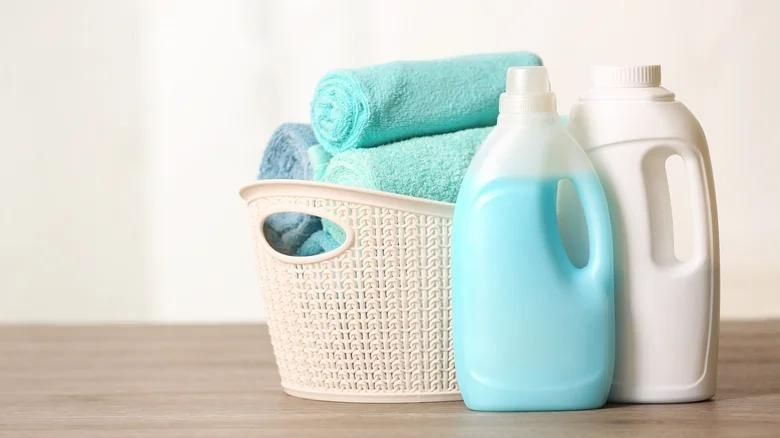
Photo Source: housedigest
It’s crucial to take into account the environmental effect of the materials we use as we work to keep our laundry clean and fresh. The ecology can be negatively impacted by detergents and fabric softeners in a number of ways, including resource depletion and water contamination. When it comes to our washing routine, being aware of these effects can help us make more environmentally friendly decisions.
Water Pollution
Chemicals included in detergents and fabric softeners have the potential to be dangerous when introduced into water systems. For instance, phosphotes, which are frequently present in detergents, can contribute to the overabundance of nutrients in water bodies, causing algal blooms and upsetting aquatic ecosystems. Look for phosphate-free or low-phosphate detergents and fabric softeners to reduce water contamination.
Marine Life
Additionally harmful to marine life are the chemicals found in fabric softeners and detergents. Aquatic species may be poisoned by certain surfactants, such as nonylphenol ethoxylates (NPEs). These pollutants can accumulate in the food chain and have long-lasting effects on marine ecosystems when they reach water bodies. Reduce these negative effects by using eco-friendly and biodegradable fabric softeners and detergents.
Energy and Resource Consumption
Detergents and fabric softeners require a large amount of energy and resources to be produced, packaged, and transported. This covers both the actual manufacturing process as well as the extraction of raw materials, such as petroleum for surfactants. We can lessen these items’ total environmental impact by buying them from businesses that value sustainability and by having them made in factories that follow green production procedures.
Packaging Waste
Fabric softeners and detergents frequently come in plastic containers, which adds to the problem of plastic waste. Plastic packaging may wind up in landfills or contaminate the environment and can take hundreds of years to degrade. Choose items with recyclable or biodegradable packaging, or think about buying in bulk to cut down on packaging waste.
Mitigation and Alternatives
There are alternatives to consider for individuals worried about the effects of detergents and fabric softeners on the environment. Natural fabric softeners and laundry detergents with plant-based chemicals can clean well while causing the least amount of damage to the environment. Additionally, you may think about using less fabric softener by softening your clothes with natural alternatives like vinegar rinses or dryer balls.
It’s crucial to keep in mind that every little modification we make to our washing regimen may benefit the environment. We can help make the world a cleaner and healthier place for future generations by making environmentally friendly and sustainable decisions.
Maintaining and Cleaning Washing Machines
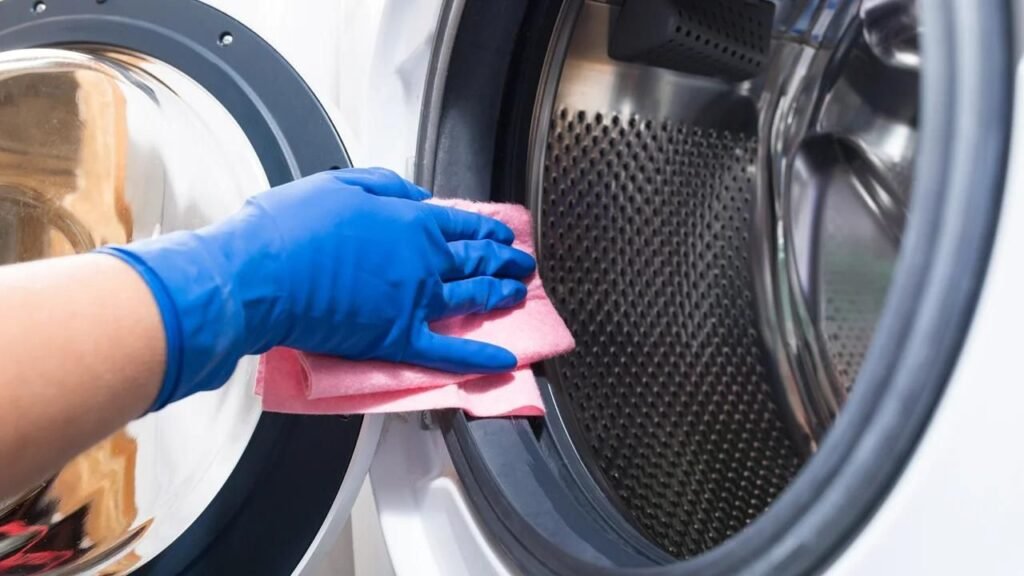
Photo Source: edition
For maximum performance and lifespan, your washing machine has to be properly maintained and cleaned often. Neglecting these responsibilities might result in decreased productivity, unpleasant odours, and even malfunctioning machinery. To maintain your washing machine in good working order and your clothing clean, abide by these rules:Photo Source:
Regular Cleaning Routine
Create a cleaning schedule to stop mould, detergent residue, and grime from accumulating within your washing machine. After each cycle of washing, start by cleaning off the drum, door, and rubber gasket with a moist cloth. Additionally, to remove any buildup, run an empty hot water cycle with a cup of vinegar or a washing machine cleaning once a month.
Dispenser Drawer Cleaning
Detergent and fabric softener residues are prone to building up in the dispenser drawer. Remove the drawer and clean it by soaking it in warm, soapy water. Brush or scrape any leftover accumulation with a toothbrush. Before re-putting the drawer in the washer, be sure it is thoroughly dry.
Clearing the Filter
A filter included in many washing machines collects lint, hair, and other laundry-related material. This filter has a tendency to silt up with time, which reduces the machine’s effectiveness. To find the filter on your washing machine, consult the handbook, and be sure to clean it frequently. Normally, you’ll have to take the filter out, clean it under running water, and clear out any debris that got stuck.
Dealing with Odors
If your washing machine starts to smell musty or nasty, mould or mildew is probably the blame. To avoid this, wipe the drum and door seal using a solution made of equal parts water and vinegar or hydrogen peroxide with a towel or sponge. After every wash, leave the door open to allow the interior to completely dry and stop the formation of mould.
Checking Hoses and Connections
Check your washing machine’s hoses and connectors often for any signs of damage, leaks or obstructions. To avoid water damage and keep the water flowing properly, tighten loose connections and replace damaged hoses very away.
Avoiding Excess Detergent
Using too much detergent might cause your washing machine to accumulate residue. Measure the proper amount of detergent for each load in accordance with the manufacturer’s instructions. Additionally, using high-efficiency (HE) detergents helps lessen the buildup of residue.
Addressing Hard Water Issues
The mineral buildup may occur in your washing machine over time if you reside in a region with hard water. To avoid mineral accumulation, think about utilising a water softener or routinely using a citric acid-based descaler on your machine.
You can make sure that your washing machine operates at peak efficiency, increase its longevity, and maintain the cleanliness and freshness of your clothing by including these maintenance and cleaning procedures into your laundry regimen.
Common Troubleshooting Tips for Laundry Issues

Photo Source: hellolaundry
Laundry problems can occur even with the proper detergents and fabric softeners. It helps to have some troubleshooting advice when dealing with typical issues like stains, odours, or fabric-related difficulties.
It’s critical to take action fast and select the best stain-removal solution based on the kind of stain. various stains need various treatments, from grass stains to wine spills. Online resources and stain-removal manuals can offer detailed information on how to deal with different stains successfully.
Finding the source is crucial when dealing with odours. Due to residue accumulation, the washing machine itself may occasionally emit unpleasant odors. As was already said, routine cleaning might aid in getting rid of unpleasant odours. It could be essential to alter the detergent dosage or try various products if the clothing still smell after washing.
Wool or silk, for example, call for specific handling. It’s crucial to read the clothing labels and adhere to the suggested washing procedures. In some instances, sensitive fabric-specific detergents or fabric softeners might deliver better results and help maintain the quality of the clothing.
The Relationship Between Detergents, Fabric Softeners, and Clothing Longevity
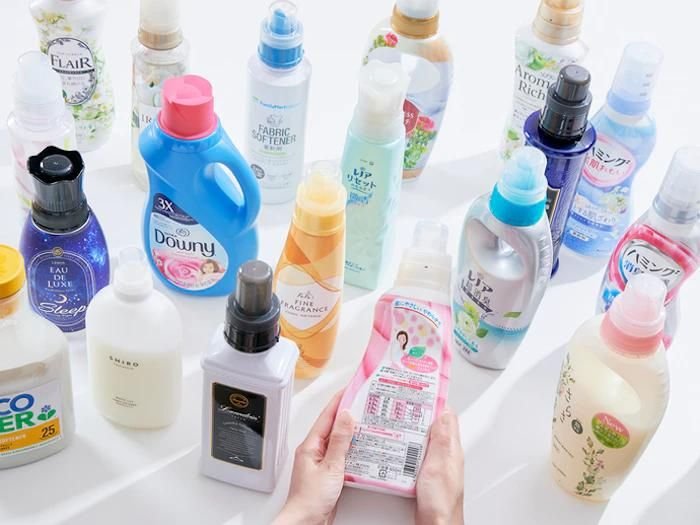
Photo Source: us.my-best
Even while laundry issues might be annoying, you can frequently solve them quickly with a little tinkering. Here are some typical problems that could occur while doing laundry, along with advice about how to fix them:
Stains and Odors
- As soon as possible, pre-treat stains using a stain remover or a paste composed of baking soda and water for tough stains.
- Use odor-eliminating laundry boosters or add a cup of baking soda or white vinegar to the wash cycle to get rid of offensive odours.
Fading Colors
- Sort your clothes by colour, then wash like hues together.
- In order to reduce friction and maintain color, turn to clothe inside out.
- Make use of a detergent designed with color protection in mind.
Shrinking Clothes:
- Follow the washing recommendations on the care label of your clothing.
- For fragile materials that are prone to shrinking, use cold water.
- By utilizing lower heat settings or air drying, you may prevent overdrying clothing.
Wrinkled Clothes:
- Once the wash cycle is over, immediately take the garments from the washer.
- To minimize wrinkles, shake out clothing before hanging or folding it.
- To get rid of wrinkles, use a steam iron or a fabric steamer.
Fuzz and Lint:
- To avoid lint accumulation, clean the lint filter before each load.
- When washing, keep lint-shedding clothing separate from lint-attracting goods.
- To get lint and fuzz off of clothing, use a lint roller or a fabric shaver.
Clothes Not Drying Properly:
- Regularly check for clogs in the dryer vent and clear it.
- Make that the dryer is set to the proper cycle and heat settings for the cloth type.
- Avoid overfilling the dryer since this might prevent optimum ventilation.
Shrunken or Misshapen Knits
- Hand wash or use the delicate cycle for knitted garments.
- To keep knits in their original form, dry them flat.
- Avoid hanging knits since doing so might make them lose their form or stretch.
Always check the care label on the clothing for detailed washing instructions. Consult a skilled cleaner or contact the manufacturer for advice if issues continue if you’re unclear how to handle a specific problem.
Comparing Different Detergent and Fabric Softener Brands
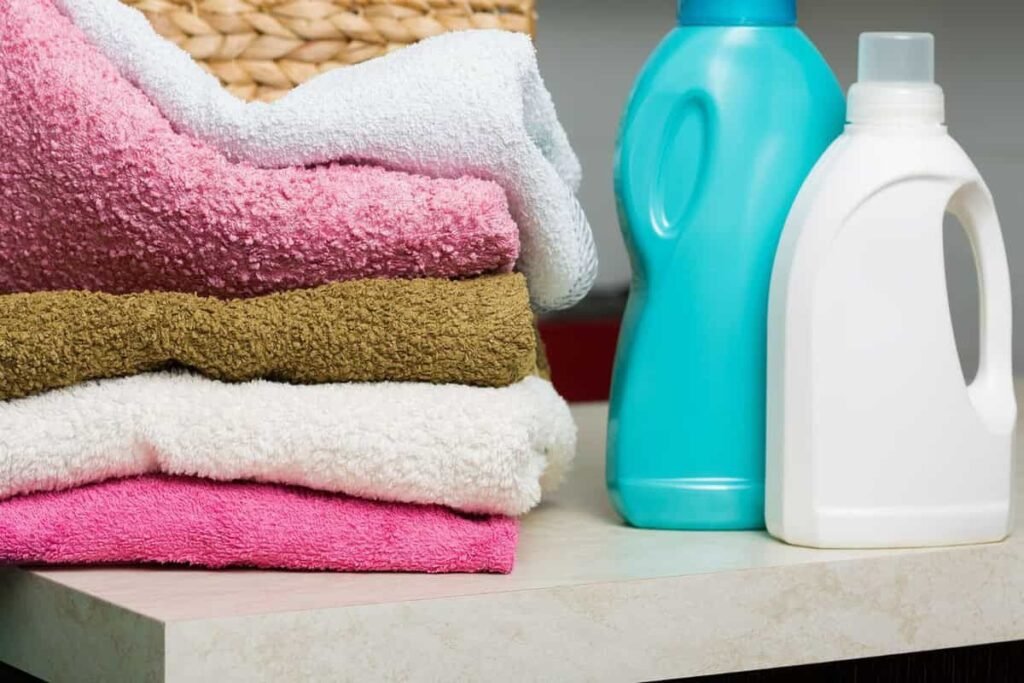
Photo Source: aradbranding
There are many different brands on the market, making it easy to choose the proper detergent and fabric softener for your laundry needs. Let’s look at some elements to take into account while contrasting various brands:
Ingredients
Take a close look at the ingredients used in the detergent and fabric softener formulas. Some companies may place a higher priority on employing natural or hypoallergenic ingredients, making them appropriate for people with allergies or sensitive skin. Others could have unique qualities like formulae that preserve colors or odor-removal capabilities. When analyzing the ingredient list, take into account your unique needs and preferences.
Effectiveness
Effectiveness is a crucial factor to consider when comparing brands. Reading customer opinions and ratings can provide you with useful information about how well certain items work. Choose products that are routinely praised for their cleaning effectiveness, stain removal skills, and overall laundry performance. Remember that efficiency might change based on things like water hardness, load size, and fabric type.
Fragrance Options
Fragrance plays a significant role in the sensory experience of doing laundry. Some companies provide a large variety of fragrance selections, letting you select smells that suit your tastes. Consider companies that provide fragrance alternatives that you and your family will enjoy, from fresh and floral to fruity or unscented.
Eco-Friendliness
If environmental sustainability is important to you, consider brands that offer eco-friendly options. Look for detergents and fabric softeners that are described as being plant-based, biodegradable, or phosphate-free. These goods frequently come in recyclable or environmentally friendly packaging and are made with little environmental effect in mind.
Specialized Formulas
Certain brands offer specialized formulas tailored to specific laundry needs. Detergents made specifically for infant clothing, athletic gear, or delicate materials are a few examples. These specialized formulae handle certain difficulties related to various garment kinds. Investigating manufacturers with specialized solutions may be useful if you have particular laundry needs, such as cleaning extremely dirty items or sensitive materials.
Consumer Reviews and Ratings
It’s beneficial to examine customer opinions and brand ratings before making a final choice. Customers frequently share their opinions on the effectiveness, value for money, and general contentment of numerous items on online platforms and retail websites. To fully comprehend the advantages and disadvantages of any brand, pay attention to both favorable and negative evaluations.
Price and Value
Take into account the price and value provided by various brands. While some brands may cost more, they could also provide better performance or more features. On the other hand, less expensive brands can still produce quality outcomes. On the basis of your priorities and financial limitations, evaluate the relationship between price and value.
You may choose a fabric softener or detergent that best suits your laundry needs, tastes, and values by evaluating different products based on these criteria. It’s important to choose the brand that best meets your individual needs because what works well for one person may not necessarily be the same for another.
Conclusion
help to ensure clean and fresh laundry by playing important functions in the washing process. We may preserve the quality of our clothing and have a pleasurable washing experience by being aware of their significance and selecting suitable products. Consider the environmental effect, adhere to the manufacturer’s recommendations, and be conscious of the durability of your apparel. We may attain the finest outcomes and maintain the best-looking garments by keeping these factors in mind.
Frequently Asked Questions
1. Can you use detergent and fabric softener in any kind of washing machine?
It is typically safe to use detergents and fabric softeners in all types of washing machines. Following the manufacturer’s directions and picking materials that work with your particular machine, though, is crucial. To prevent excessive foam or residue, high-efficiency machines may need detergents that have been properly designed.
2. How can I make my washing machine’s detergent residue less noticeable?
Use the right quantity of detergent for your load size to reduce detergent residue. Too much detergent use might result in excessive buildup. Regularly cleaning the washing machine may also aid in removing any built-up residue, particularly if you focus on the dispensers and drum.
3. Can fabric softeners irritate or aggravate allergies in people?
Fabric softeners can cause skin reactions or rashes, especially in those with sensitive skin. It is advised to switch to fragrance-free or hypoallergenic fabric softeners if you suffer any negative responses, or to stop using them entirely.
4. Exist any all-natural detergents that can replace those with a chemical base?
Yes, there are natural detergents available to replace those made of chemicals. These options frequently make use of essential oils and substances from plants to offer powerful cleaning without using harsh chemicals. They are a fantastic solution for anybody looking for a more skin- and environment-friendly laundry regimen.
5. Do fabric softeners have any impact on how absorbent towels and other materials are?
Fabric softeners may, in fact, impact how absorbent towels and other materials are. They leave behind a covering that may lessen the fibres’ capacity to absorb moisture. If maintaining absorbency is crucial, think about using fabric softeners sparingly or switching to alternatives like dryer balls.








